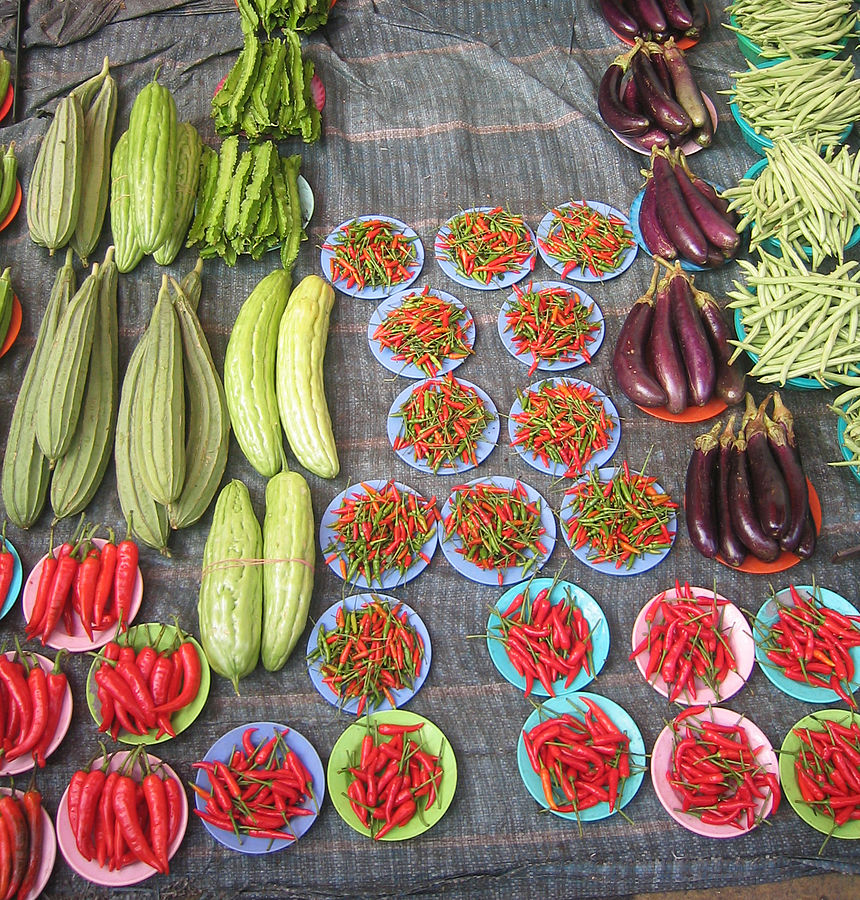What Does Sustainability in Agriculture Really Mean?
Today’s consumers are often unaware of the impact of industrial agriculture. As they shop their local grocery store for fresh tomatoes, lettuce, and other produce, they don’t see beyond the low prices to the practices which make them possible. While carrots and potatoes are relatively cheap, their cost is enormous.

To understand sustainability in agriculture, it helps to understand its necessity first. Industrial agriculture affects health and safety, rural environments and even economies in negative ways, and the damage is difficult to comprehend. Statistics show a staggering loss, and numbers are only a weak representation.
According to a new global study, industrial agriculture consumes as much as 5 million hectares of forests every year, an area equivalent to Costa Rica. This repurposed land has many applications, such as palm oil plantations which produce ingredients for food, cosmetics and other products for human consumption.
Palm oil plantations serve a purpose, of course, but heavy deforestation often results in the permanent loss of natural habitats and delicate ecosystems. Expansion endangers animal and plant life on a massive scale, eliminating entire species. With this in mind, how can we, as a society, address this growing issue?
Fortunately, we don’t have to compromise our global food supply for environmental preservation. A balance is not only possible, but plausible, and through sustainable agriculture, we can achieve ecological harmony. We’ll explore what this restoration looks like, and the promise of sustainability for the future of the planet.
What Are the Core Tenets of Sustainable Agriculture?
Sustainability has different definitions depending on the context, but within the realm of agriculture, sustainability is relatively simple. Sustainable agriculture involves the promotion of farming practices and methods which are profitable, environmentally sound and beneficial for communities. These are the three core tenets.
According to the first of the three tenets, sustainable agriculture has to be economically viable. If farmers are unable to earn a profit beyond their operating expenses, the practice or method isn’t sustainable. Even if it’s environmentally sound and beneficial for communities, it won’t work if it yields low returns.
According to the second of the three tenets, sustainable agriculture has to be ecologically sound. It’s essential to conserve the planet’s resources, for both our own security and that of future generations. The long-term viability of agriculture depends on the careful treatment of our water supply and available land.
According to the third of the three tenets, sustainable agriculture has to be socially supportive. Farmers, farm families and farming communities should enjoy a better quality of life, enriched by sustainability instead of pressured. If they’re struggling to support sustainable practices, they can’t make progress.
In summation, the system should indefinitely sustain itself without degrading the land, environment or people. When agricultural professionals meet the three tenets above, they’re operating with a high level of sustainability. So what do these operations look like, and what strategies do farmers implement?
What Strategies Support Sustainable Agriculture?
While sustainable agriculture is an attractive concept, farmers need more than a concept to make the transition. They need strategies they can trust to support their operation as they turn their focus to the environment and surrounding communities. We’ll detail six of those strategies below, touching on some lesser known, and more popular methods for sustainability in modern farming operations.
1. Holistic Agriculture
Holistic agriculture is an approach to farming which involves the study of interrelated and interdependent parts. Farmers take advantage of natural ecosystems to manage their land, using an integrated system of plant and animal production practices with site-specific applications over the long-term.
In truth, holistic agriculture actually comprises multiple methods of farming, and definitions tend to differ depending on the source. Despite these variations, Holistic Management International claims the four cornerstones of holistic agriculture are land planning, grazing planning, financial planning and biological monitoring.
2. Regenerative Agriculture
Beyond holistic agriculture, certain elements of sustainability are present in “regenerative agriculture.” It moves away from conventional, high-input farming which degrades soil quality and aims to restore fertility through a range of techniques. Instead of dominating nature by mechanical or chemical means, it mimics it.
Regenerative agriculture is an interesting approach to sustainability, a practice which doesn’t control, but cooperates with animal and plant life. It allows flora and fauna to form a complex, symbiotic system and shows respect for the ecology of the natural world. Over time, it helps to protect against depletion.
3. Agroforestry
While industrial agriculture engages in deforestation on a massive scale, smaller operations can take advantage of forests. Some agricultural professionals use the foliage to grow shade-loving specialty crops. Other professionals use the trees and shrubs along streams as buffer strips to trap sediment and enhance filtration.
Agroforestry also involves inter-planting trees with crops and pastures, as well as the improved management of woodlots and windbreaks. Both farmers and ranchers can implement these basic strategies to strengthen the profitability of their operation and reduce its negative impact on the surrounding area.
4. Nutrient Management
Chemical fertilizers are often indispensable for the cost-effective production of commercial crops, but their long-term application often has unintended consequences. Gradually, with repeated use, the chemicals in the fertilizer seep through the soil into groundwater, causing contamination and environmental imbalance.
The practice of nutrient management accounts for the potential dangers of chemical fertilizer. Agricultural professionals monitor and manage the manure, nitrogen and other plant nutrients they employ in their fields, using on-farm sources like leguminous cover crops to reduce the need for purchased fertilizer.
5. Water & Soil Conservation
Since agriculture accounts for 70 percent of all freshwater withdrawals, water conservation is fundamental to sustainability in the industry. As an important part of agricultural stewardship, farmers improve the quality of drinking and surface water by planting riparian buffers, which also protect the wetlands.
Farmers also prevent wind and water erosion on their soil by engaging in strip cropping, reduced tillage and no-till practices. Among other sustainable practices for farmers and ranchers, these are some of the most accessible, and they don’t require an enormous investment to integrate into a standard operation.
6. Cover Crops
Cover crops aren’t necessarily a new farming method, but they’re effective for preserving soil health. These crops have other benefits as well, preventing erosion, suppressing weeds and breaking pest cycles. Depending on the species of plant a farmer chooses for their operation, they’ll enjoy different advantages.
Buckwheat has a fast growth rate and makes excellent ground cover to protect against weeds and erosion. Various types of clover can adjust nitrogen levels in the soil, improve its overall structure and enhance fertility. Buckwheat, clovers and other plants serve as natural, organic solutions to common problems.
What Is the Future of Sustainable Agriculture?
Now that we’ve touched on the core tenets of sustainable agriculture and the strategies which support it, what can we expect as we move forward? With the widespread adoption of sustainable practices in small- and large-scale operations, how will that change manifest, and what advantages will we enjoy?
As we mentioned earlier, sustainability is integral to ecological harmony. Since large-scale farming and ranching contributed to 27 percent of the total loss of the planet’s forests between 2001 and 2015, sustainable agriculture has inarguable value for the future of conservation. But the benefits don’t end there.
New technology is essential in meeting tomorrow’s demands, and as the global population continues to grow, agriculture has to grow alongside it. Water scarcity and depleted resources will necessitate change, and sustainable operations with high levels of efficiency and productivity will prove all but indispensable.
More than that, sustainable practices are likely to attract new workers to the industry. As of now, agriculture is the most labor-intensive of all economic activities, often associated with poverty and risk. Sustainability will improve these unappealing conditions and encourage young professionals to invest in their own operations.
In short, it’s best to remain optimistic, with a positive outlook for the future.
A Commitment to the Planet
The toll of industrial agriculture is impossible to ignore. With wide swaths of forestland destroyed for expansion, the disruption of sensitive ecosystems and polluted waterways, it’s clear that change is necessary, and it needs to happen soon. Fortunately, sustainable agriculture provides a promising solution.
Through agroforestry, nutrient management, holistic agriculture and other strategies, farmers and ranchers can make a difference. It doesn’t take a substantial adjustment, and even something as simple as soil conservation has a positive impact. It represents forward progress toward sustainable practices.
Not so far in the future, when a consumer shops their local grocery store for fresh tomatoes and carrots, they’ll feel confident their purchase is ethical. As more farming operations transition toward sustainability, we’ll distance ourselves from the implications of industrial agriculture and its effect on the environment.
We’re still far from our goal of ecological harmony, but every day, we move closer to restoring that balance. It begins with acknowledging the consequences of our consumption. Only then can we start to prepare for the challenges ahead, moving forward with a commitment to the planet and a dedication to those who will inherit it.
Bio:
Emily Folk is a freelance writer and blogger on conservation and sustainability. To see her latest posts, check out her blog, Conservation Folks, or follow her on Twitter, @emilysfolk!




